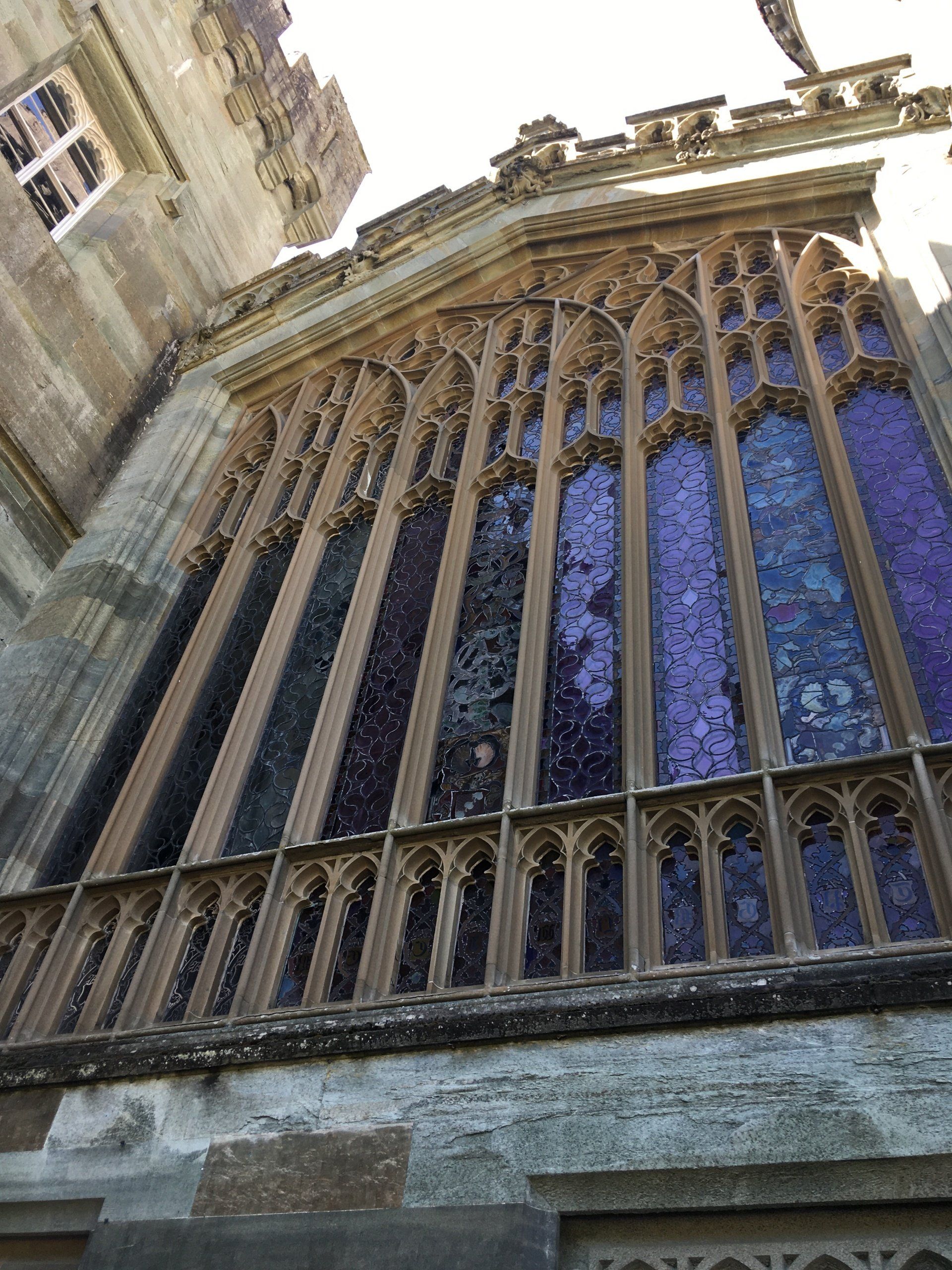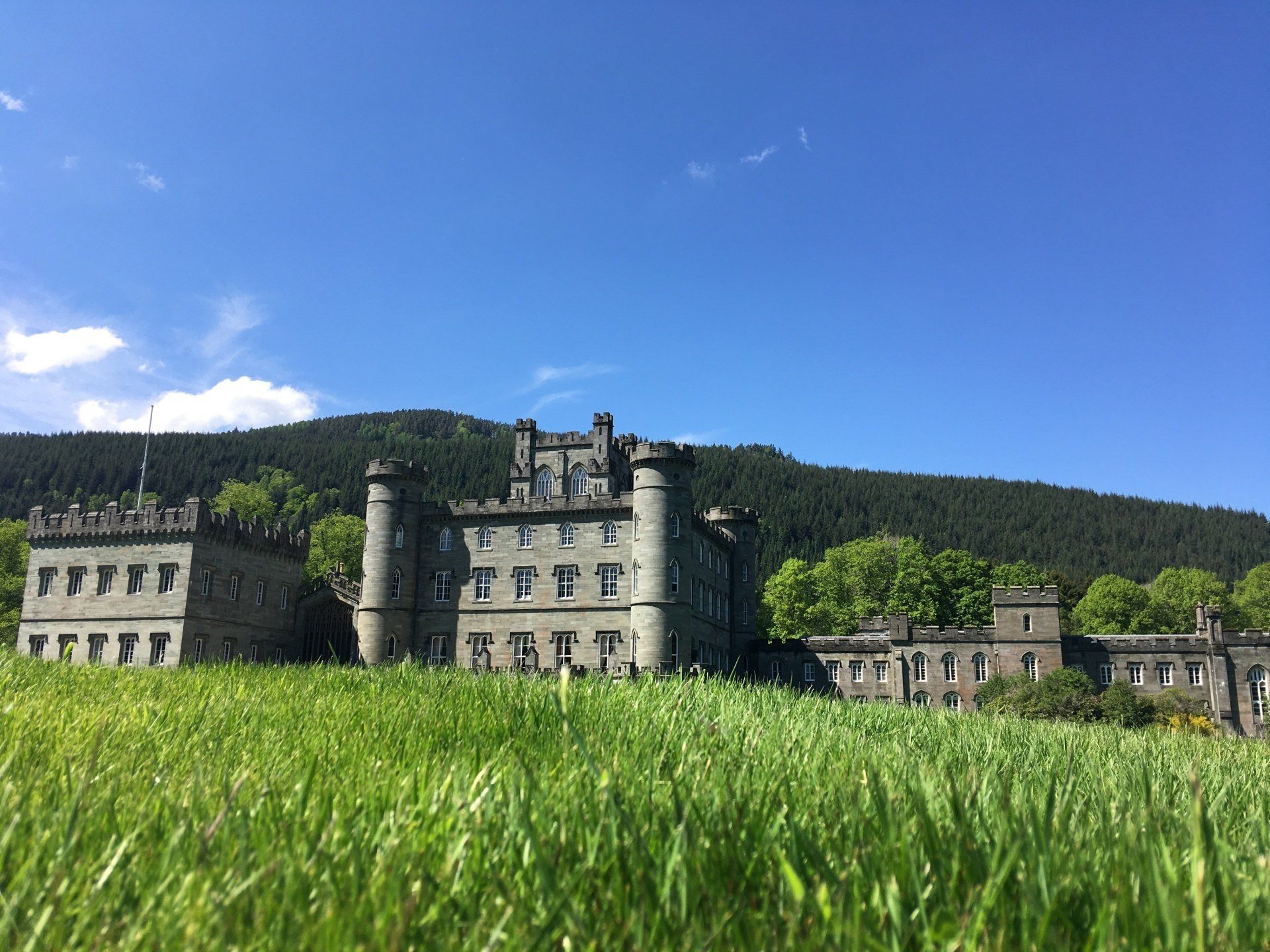Taymouth Castle
Situated on the north-east of the village of Kenmore in an estate which encompasses 450 acres, Taymouth Castle lies on the south bank of River Tay, about a mile from Loch Tay.
The Castle stands on the site of the much older Balloch Castle, which was built in 1552, as the seat of the Campbell clan. It was demolished in 1799 to make way for the current Castle. The new castle's blue-grey stone was taken from the quarry at Bolfracks.
It is said that when Sir Colin Campbell, the sixth laird of Glenorchy, built the Castle of Balloch at the extreme east end of his property, he intended that it should ultimately be the centre of his domain—that his lands should extend as far to the east as they did to the west. He initially intended to build his castle at Acharn however, as the story goes, his plans were frustrated by a witch. She prevailed upon him to hold eastward, and stop where he heard the first mavis sing, which was in the hedges at Balloch, and there to establish his castle.
Ash Trees
& Blue Sapphire Stone Prophecies
This was not an auspicious start for the Campbells.
It has been noted that some time in the 17th century, the Laird of Inchbrakie witnessed a large crowd, headed by one of the Campbells of Glenorchy, who were preparing to drown a witch. The Laird recognised the victim as being Katherine Niven, his old nurse and subsequently did his best to try and save her. He was unsuccessful, but she was still grateful enough to throw him a blue sapphire stone for his efforts. She said that whilst the stone remained with him, he would always have good fortune and that the Campbells would not have a male heir.
Both prophecies were said to have come true.
After the church at Lawers was built, the Lady of Lawers planted an ash tree beside its north side and prophesied that ‘'the tree will grow, and when it reaches the gable the church will be rent in twain.
When it reaches the ridge, the House of Balloch will be without an heir, and whoever would cut this tree down will surely come to an evil end.”
The tree reached the height of the gable in 1843 and a thunderstorm destroyed the west loft of the church, rendering it derelict. 1843 was also the year in which the Church of Scotland split in the Disruption. In 1862, when the tree reached the roof ridge, John Campbell, 2nd Marquess of Breadalbane of the House of Balloch, died with no heir, rendering the barony of Breadalbane, the earldom of Ormelie, and the marquessate of Breadalbane extinct. In the 1870s, local farmer John Campbell chopped the Lady’s ash tree down, against the advice of his neighbours. Shortly afterwards he was gored to death by his own Highland bull, his assistant went mad and had to be committed to the asylum, and his horse dropped dead.
May have been a forewarning for the problems that have engulfed the Castle and estate to the present day.
Outstanding
Architecture
Taymouth Castle was built in a neo-Gothic style and on a lavish scale, it is regarded as the most important Scottish castle in private ownership.
Its public rooms are outstanding examples of the workmanship of the finest craftsmen of the 19th century. No expense was spared on the castle's interior, which was decorated with extravagant carvings, plasterwork and murals. Panels of medieval stained glass and Renaissance woodwork were incorporated into the scheme. Much of this decor still survives.
The castle is a Category A listed building, and the grounds, which include parklands and woodlands, are included in the Inventory of Gardens and Designed Landscapes, the national listing of significant gardens. Historic Environment Scotland have graded the castle as 'outstanding' in all the following categories: 'Work of Art', 'Historical', 'Architectural' and 'Scenic'. They also acknowledged that due to the Arboretum and the outstanding size of its remaining trees, it also has horticultural value. It is said that some of the first larches brought to Scotland from the Tyrol were planted on the estate.
Twelve of Taymouth Castle's buildings/structures are currently recorded on the Buildings at Risk Register for Scotland. The highest concentration in Scotland.




